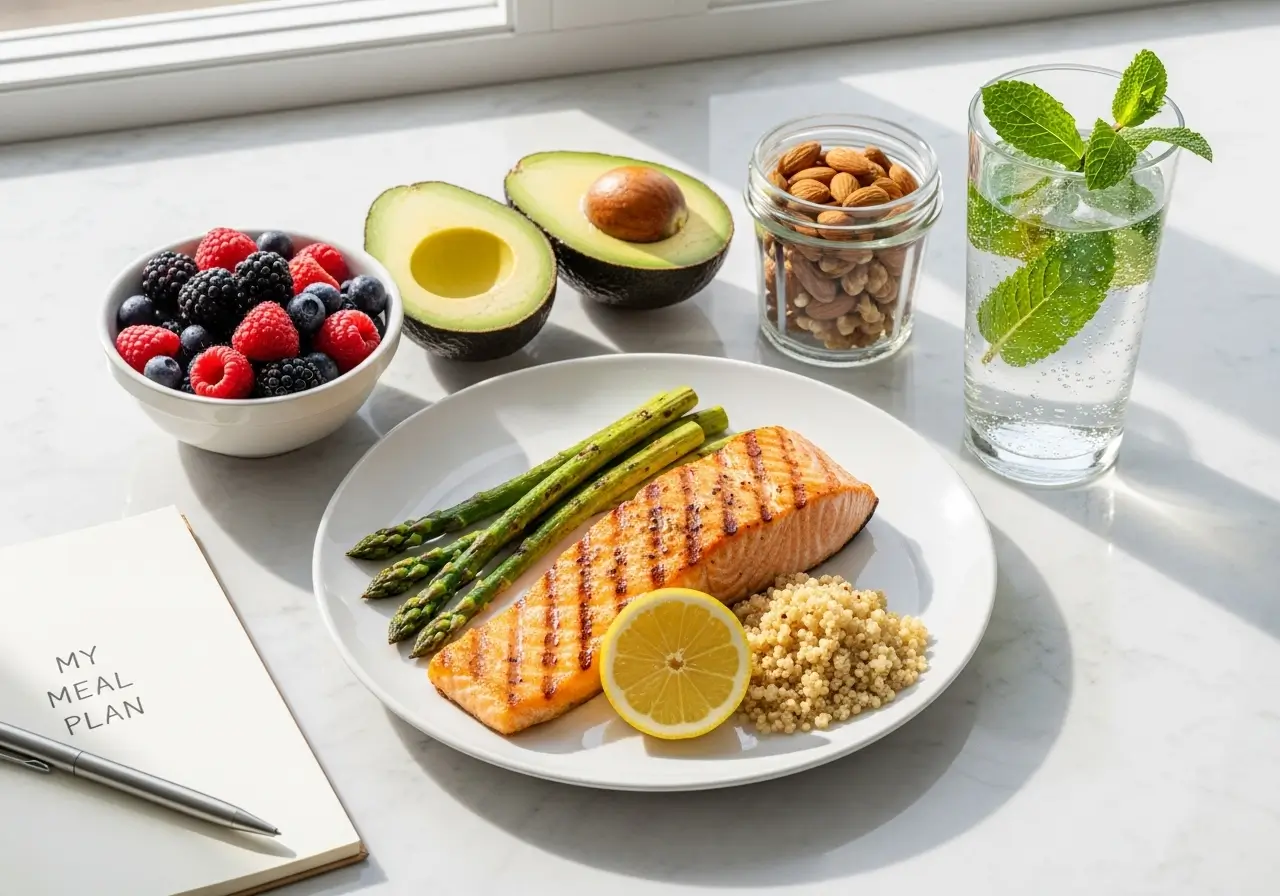Starting a new medication like Mounjaro (tirzepatide) can feel like a significant step towards managing type 2 diabetes and achieving your weight loss goals. As a dual-action GIP and GLP-1 receptor agonist, it works powerfully to regulate blood sugar and reduce appetite. But you might be wondering: what exactly should I be eating? Creating a supportive and effective Mounjaro meal plan is crucial not only for maximizing the medication’s benefits but also for building sustainable, healthy habits for life. This guide will walk you through the essential principles of eating well on Mounjaro, helping you feel confident and energized on your health journey.
Understanding the Link Between Mounjaro and Nutrition
Mounjaro isn’t a magic pill; it’s a tool that works best when paired with lifestyle modifications, especially diet and exercise. The medication helps by slowing down digestion and signaling fullness to your brain, which naturally leads to eating less. However, the quality of the food you consume is paramount. A well-structured Mounjaro meal plan helps you:
- Manage Potential Side Effects: Common side effects like nausea or constipation can often be mitigated by choosing the right foods.
- Ensure Adequate Nutrition: Since you’ll be eating smaller portions, it’s vital to make every bite count with nutrient-dense foods.
- Support Muscle Mass: Prioritizing protein is essential to ensure you’re losing fat, not valuable muscle tissue.
- Stabilize Blood Sugar: Pairing Mounjaro with a balanced diet further enhances its primary function of blood glucose control.
Core Principles of a Successful Mounjaro Meal Plan
You don’t need a complicated or restrictive diet. Instead, focus on these foundational principles to build your meals.
Prioritize Lean Protein
Protein is your best friend on this journey. It is highly satiating, meaning it keeps you feeling full and satisfied for longer, which is a major advantage when your appetite is reduced. It also plays a critical role in preserving lean muscle mass during weight loss and helps stabilize blood sugar levels. Aim to include a source of lean protein with every meal.
- Excellent Sources: Chicken breast, turkey, fish (like salmon and tuna), eggs, Greek yogurt, cottage cheese, tofu, lentils, and beans.
Embrace Fiber-Rich Foods
Fiber is another key player in a Mounjaro-friendly diet. It aids in digestion, promotes feelings of fullness, and can help manage side effects like constipation. Focus primarily on non-starchy vegetables, which are high in fiber and nutrients but low in calories and carbohydrates.
- Non-Starchy Vegetables: Leafy greens (spinach, kale), broccoli, cauliflower, bell peppers, cucumbers, zucchini, and asparagus.
- Other Fiber Sources: Berries, apples, beans, and whole grains like quinoa and oats in moderation.
Choose Healthy Fats
Fat is not the enemy! Healthy fats are essential for hormone production, brain health, and absorbing certain vitamins. They also contribute to satiety. The key is to choose unsaturated fats over saturated and trans fats.
- Good Sources: Avocado, nuts, seeds (chia, flax, pumpkin), olive oil, and fatty fish.
Hydration is Non-Negotiable
Staying well-hydrated is always important, but it’s especially crucial when taking Mounjaro. Drinking plenty of water helps manage side effects like constipation, supports your metabolism, and can prevent you from mistaking thirst for hunger. Aim for at least 8-10 glasses of water a day, or more if you are active.
Foods to Build Your Mounjaro Meal Plan Around
Here’s a quick-reference list of foods to stock in your kitchen:
- Lean Proteins: Skinless poultry, fish, eggs, lean beef, tofu, tempeh, legumes.
- Non-Starchy Vegetables: Spinach, kale, broccoli, cauliflower, bell peppers, tomatoes, onions.
- Low-Glycemic Fruits: Berries, cherries, apples, pears (in moderation).
- Healthy Fats: Avocados, almonds, walnuts, chia seeds, flaxseeds, olive oil.
- Complex Carbs (in small portions): Quinoa, brown rice, oats, sweet potatoes.
Foods to Limit or Approach with Caution
Certain foods can worsen side effects or hinder your progress. It’s best to limit:
- Sugary Foods and Drinks: Soda, candy, pastries, and sweetened juices can spike blood sugar.
- Greasy and Fried Foods: These can be hard to digest and may trigger nausea or indigestion.
- Highly Processed Foods: Items with long ingredient lists, refined grains, and artificial additives offer little nutritional value.
- Refined Carbohydrates: White bread, white pasta, and sugary cereals can lead to blood sugar fluctuations.
- Alcohol: It can affect blood sugar and add empty calories. Always consume in moderation and with food, after consulting your doctor.
Putting It All Together: A Sample Day
What does a typical day look like? Here’s a simple Mounjaro meal plan idea:
- Breakfast: Scrambled eggs with spinach and a side of sliced avocado.
- Lunch: A large salad with grilled chicken, mixed greens, cucumber, tomatoes, and a light vinaigrette dressing.
- Dinner: A protein-packed, flavorful meal like our Ultimate Brazilian Mounjaro Recipe. It’s low-carb, full of flavor, and perfectly portioned.
- Snack: A small handful of almonds or a cup of Greek yogurt.
Your Path to Success
Creating a Mounjaro meal plan is about nourishment, not deprivation. By focusing on a balanced intake of lean protein, high-fiber vegetables, and healthy fats, you can effectively support your health goals, manage side effects, and build a positive relationship with food. Always remember to listen to your body’s hunger and fullness cues, which Mounjaro will make much clearer. For personalized advice, consult with your healthcare provider or a registered dietitian. Ready to get started with a delicious, compliant meal? Try our incredible Brazilian-inspired recipe tonight!

